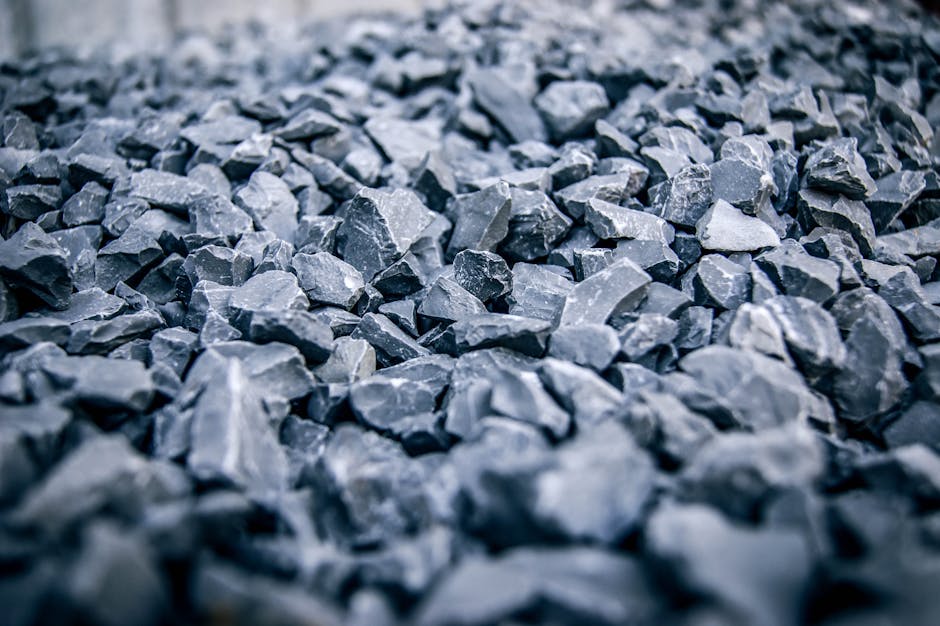Rocks: the unsung heroes of the construction and industry world. They may not be able to talk or walk, but boy oh boy, can they hold some serious weight! From towering skyscrapers to sturdy bridges, rocks play a crucial role in shaping our world. So grab your hard hat and get ready to rock and roll as we explore the essential role of rocks in construction and industry.
The Geological Foundation of Construction
When it comes to building anything, from simple homes to towering skyscrapers, the geological foundation is everything! Imagine trying to build a house on quicksand – it would sink faster than a lead balloon! So, let’s dig deep (pun intended) into why the geological foundation is crucial for construction.
First off, let’s talk about the different types of geological foundations that construction projects may encounter:
- Bedrock – the rock-solid foundation that holds everything together
- Clay – a slippery slope, literally, for construction projects
- Peat – an unstable and squishy foundation that can sink a project in no time
Now, let’s not rock the boat, but choosing the right geological foundation is key. **Bedrock** is like the holy grail of foundations - sturdy, reliable, and indestructible. It’s basically the Chuck Norris of geological foundations. On the other hand, building on **clay** is like building on a banana peel – one wrong move and you’re slipping and sliding all over the place.
So, next time you’re planning a construction project, remember to pay close attention to the geological foundation. It may not be as glamorous as the finished building, but it’s the unsung hero that holds everything together. Now, go forth and build, but remember – don’t let your dreams sink into the peat!
Types of Rocks Used in Construction
So you’re in the construction business and you’re looking for the perfect rocks to use for your next big project. Well, look no further because I’ve got the inside scoop on all the best types of rocks for construction!
First up, we have granite. This rock is as tough as nails, making it perfect for heavy-duty projects. Whether you’re building a skyscraper or a bridge, granite is sure to hold up under the pressure. Plus, it comes in a variety of colors, so you can customize your project to your heart’s content.
Next on the list is limestone. This versatile rock is great for everything from road construction to building facades. Its natural beauty adds a touch of elegance to any project, and its durability ensures that your construction will stand the test of time.
And let’s not forget about sandstone. This rock is like the Swiss Army knife of construction materials – it can do it all! From building foundations to decorative accents, sandstone is a versatile and reliable option for any project.

The Strength and Durability of Rocks in Industry
When it comes to rocks in the industrial world, they are often the unsung heroes of our daily lives. Rocks may seem like hard and boring objects, but they are actually quite strong and durable when put to the test in various industries.
One of the most common uses of rocks in industry is as building materials. From sturdy granite to versatile limestone, rocks are essential in constructing buildings, roads, and bridges that can withstand the test of time. They are like the construction workers of the natural world, holding everything together with their unwavering strength.
Not only are rocks tough, but they are also incredibly versatile. You can find rocks being used in everything from countertops to jewelry to industrial machinery. They are like the Swiss Army knives of the earth, always ready to lend a helping hand (or a sturdy surface).
So, the next time you come across a rock in your daily life, take a moment to appreciate its strength and durability. After all, rocks may just be the unsung heroes of the industrial world, quietly holding everything together with their rock-solid reliability. Who knew that rocks could rock so hard?!

Innovative Uses of Rocks in Modern Architecture
Who knew rocks could be so versatile in modern architecture? Gone are the days of using rocks solely for building walls or pathways. Designers and architects are getting creative with this ancient building material, incorporating it into innovative and eye-catching designs that push the boundaries of what we thought was possible with rocks.
One of the most interesting uses of rocks in modern architecture is in the creation of living walls. These walls are not only functional but also visually stunning, adding a touch of nature to urban environments. By using a variety of rocks in different shapes, sizes, and colors, architects can create intricate patterns and designs that bring a unique aesthetic to any building.
Another creative application of rocks in modern architecture is in the construction of rock bridges. These bridges are not only structurally sound but also add a touch of whimsy to any landscape. By carefully selecting and arranging rocks of varying sizes, architects can create bridges that blend seamlessly into their surroundings while also serving as a functional and visually striking design element.
Lastly, rocks are being used in modern architecture to create innovative sculptures and art installations. From towering rock formations that double as seating areas to abstract sculptures that challenge our perceptions of space and form, rocks are being used in new and exciting ways to create art that is both visually stunning and thought-provoking.

The Environmental Impact of Rock Extraction in Construction
Rock extraction in construction may seem like a harmless activity, but the environmental impact is no laughing matter. From habitat destruction to air pollution, the consequences of this necessary evil can be far-reaching.
One of the most significant impacts of rock extraction is the destruction of natural habitats. Animals who once called these rocks home find themselves displaced, forced to find new places to hide from predators or lay their eggs. It’s a tough reality for these critters, who probably weren’t expecting their homes to be bulldozed for a new shopping mall.
Let’s not forget about the air pollution caused by rock extraction. Dust and emissions from heavy machinery can make the air quality around these sites less than ideal. If you enjoy breathing clean air, you might want to think twice before moving next door to a rock quarry.
Overall, is no joke. As we continue to build and expand our cities, it’s important to consider the consequences of our actions on the world around us. So next time you see a construction site, maybe take a moment to appreciate the rocks and critters who had to make way for progress.
Challenges and Solutions in Using Rocks for Industrial Purposes
Challenges:
Oh, rocks. So reliable, yet so unpredictable when it comes to industrial use. Here are some of the challenges we face when attempting to harness the power of these stubbornly solid materials:
- Irregular shapes – Why can’t rocks just be nice and uniform like Lego blocks? Trying to fit oddly shaped rocks together is like playing a game of industrial Tetris, but without the satisfying disappearing blocks.
- Hardness – Rocks can be as tough as nails (or even tougher). Forget trying to break them with your bare hands; you’ll just end up with some seriously bruised knuckles.
- Weight – Have you ever tried moving a giant boulder? Yeah, good luck with that. Rocks have a way of reminding us that gravity is a force to be reckoned with.
Solutions:
But fear not, intrepid industrial rock users! There are ways to overcome these challenges and make rocks bend to our will:
- Crushing machines – Because why break a sweat trying to smash rocks manually when you can let a machine do all the hard work for you? Just sit back, relax, and watch those stubborn boulders get pulverized into submission.
- Precision cutting tools – Who needs perfectly shaped rocks when you have the technology to slice and dice them into whatever shape you desire? Say goodbye to awkwardly fitting rocks together like a jigsaw puzzle.
- Heavy machinery – When in doubt, bring in the big guns. Cranes, bulldozers, and excavators are your best friends when it comes to moving those pesky heavy rocks around. Just make sure to watch your toes.
FAQs
Why are rocks essential in construction and industry?
Well, without rocks, we’d all be living in houses made of cotton candy! Rocks provide the strong foundation needed for buildings, roads, and other structures. They also serve as raw materials for various industries.
What types of rocks are commonly used in construction?
There’s a whole rockstar lineup of rocks used in construction, including granite, limestone, and sandstone. These rocks are known for their durability and strength, making them ideal for building sturdy structures.
How are rocks used in the construction of roads?
Rocks play a crucial role in road construction, providing the base and surface material needed to withstand the heavy traffic and harsh weather conditions. Without rocks, our roads would crumble faster than a cookie in a kid’s hand!
Can rocks be used in other industries besides construction?
Absolutely! Rocks are like the Swiss Army knife of raw materials, used in industries ranging from agriculture to manufacturing. They can be found in everything from fertilizers to cosmetics to electronics.
What is the environmental impact of quarrying rocks for construction?
While quarrying rocks can have some environmental impacts, such as habitat destruction and pollution, proper mining practices can help mitigate these effects. Plus, who wouldn’t want to live in a world without the rock-solid structures that rocks provide?
—
Rock On!
Let’s tip our hard hats to the unsung heroes of construction and industry - rocks! From towering skyscrapers to sturdy bridges, these trusty rocks have been holding it down (literally) for centuries. So next time you see a rock, give it a nod of appreciation for all its essential roles in keeping our world standing strong. Keep on rockin’ in the free world!






